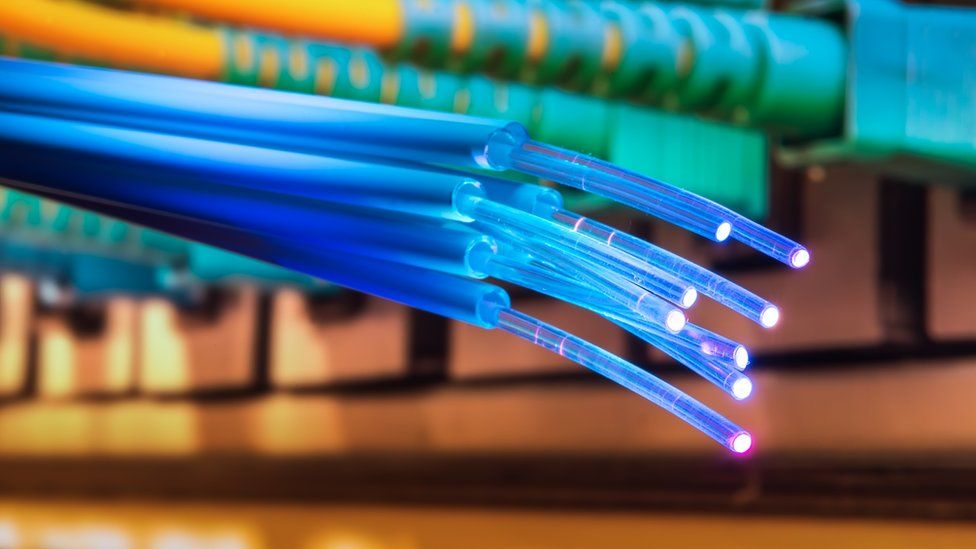
Fiber optic cables have become increasingly popular over the past few years as the demand for faster data transmission speeds over the internet continues to grow, however, some people may still be ignorant of what fiber optic cables are.
What is fiber optic cable? How does it work?
In this article zms cable editor will take you through the definition of fiber optic cable and information on how it works.
A fiber optic cable, an Ethernet cable, consists of one or more optical fibers used to transmit data.
It is a cable-like component that is used to carry light and is much more expensive than copper cables.
Fiber optic cables are designed to use optical pulses to support long-distance telecommunications and high-speed data transmission.
Typically, fiber optic cable can operate at speeds of 10 Gbps, 40 Gbps, and even 100 Gbps.
As a result, it is widely used in most of the world's Internet, cable TV, and telephone systems.
Typically, a fiber optic cable consists of five parts: the fiber core, the cladding, the coating, the reinforcing element, and the outer jacket.
is a very thin strand of glass or plastic called an optical fiber?
is the insulating sleeve that fits tightly around the "core" and provides a low refractive index to allow the fiber to work.
The protective layer of an optical fiber.
Or reinforcing elements help protect the core from extrusion and excessive tension during installation.
The outer sheath is used to protect the cable from environmental hazards.
After understanding what a fiber optic cable is, let's take a look at how a fiber optic cable works.
Light travels along a fiber optic cable by repeated reflections from the inner wall. The core and cladding bend the incident light at an angle and have their refractive index.
As optical signals are sent through the fiber optic cable, they are reflected from the core and cladding in a series of bounces, a process called total internal reflection.
Typically, there are two types of fiber optic cables, single-mode fiber (SMF) and multimode fiber (MMF).
Single-mode fiber has a very fine core, about 5-10 microns in diameter, while multimode fiber has a core of about 10 times the hundredth diameter of a single-mode fiber.
Typically, single-mode fibers used in telecommunications operate at 1310nm or 1550nm, while multimode fibers operate at 850nm and 1300nm. Compared to single-mode fibers, the transmission distance of multimode fibers is limited by model dispersion because it has a larger core size and supports multiple optical modes (from OM1 to OM5).
Single-mode fiber is suitable for long-distance applications such as 100km between buildings, while multimode fiber is suitable for short-distance transmission within buildings, such as computer network links.
Nowadays, fiber optics is more and more widely used in weak power engineering because of its fast transmission rate and strong anti-interference ability, plus the advancement of technology over the years, and its price is becoming more and more affordable.
Here we share some daily maintenance tips and testing methods for optical fiber for your reference.
The technical data of each fiber should be measured once a year or half a year and compared with the original data.
Problems found as soon as possible to analyze and discuss the suspicions, as early as possible to remove the problems and faults to avoid sudden accidents.
Regular inspection of the fiber optic cable line, the inspection found in the cable, sheath, cable joints, line drape, and other issues to make a detailed record, to facilitate early detection and processing of the problem, which is a very important part of the maintenance.
Regularly testing the receiver inlet optical power and export RF level, when found with the original record large difference, should analyze whether the fault is from the optical cable or optical receiver, from the live plug parts, or the optical transmitter itself caused by the reasons.
The optical time domain reflectometer (OTDR3000) works by the backward Rayleigh scattering signal generated in the optical fiber under test and tests the length of the fiber, fiber attenuation, fiber failure point, and fiber joint loss.
Due to the defects in the fiber itself and the uniformity of the doping components, they scatter under the action of photons, if there are geometric defects or fracture surface in the fiber (or when the joint is), will produce Fresnel reflection, the reflection strength is proportional to the optical power through the point.
It also reflects the decay size of each point of the fiber, because the scattering is emitted in all directions, the reflected light will also form a relatively large reflection angle, scattered and reflected light is a very small part, it can also enter the fiber aperture angle and reverse the transmission to the input side.
If the fiber is interrupted, the backscattered light power from that point onwards will be reduced to zero. Based on the backward transmission of scattered light determine the location of the fiber break point and fiber length. This is the basic working principle of the time domain reflectometer.
Fiber optic cable splicing and testing instruments are special, and ordinary cable splicing tools and testing instruments are completely different.
Optical cable joints with automatic fusion machine and measuring distance, loss of optical time domain reflectometer is expensive, but the quality of the joint loss is particularly small, the detection distance error is small, accurate, and fast.
The above is all the content, there is no help to you? If you are interested in fiber optic cable or have any questions on the purchase of fiber optic cable, welcome to consult us.